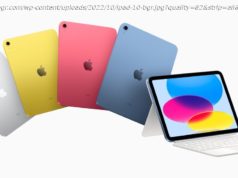Android 9 Pie has officially been launched, bringing in a ton of new features for devices like the Pixel, Pixel XL, Pixel 2, Pixel 2 XL and the Essential Phone. However, initially, these are the first devices that will get updated to Android 9 Pie, while the rest of the smartphones will be receiving it later…
Android 9 Pie has officially been launched, bringing in a ton of new features for devices like the Pixel, Pixel XL, Pixel 2, Pixel 2 XL and the Essential Phone. However, initially, these are the first devices that will get updated to Android 9 Pie, while the rest of the smartphones will be receiving it later in the year. Well, you can also include the HTC U12 Plus and the U11 because they will be updated to Android 9 Pie later this year.
Apart from the HTC U12 Plus, and the U11, the Taiwanese smartphone maker has confirmed via its Twitter account that the U11 Plus and the U11 Life will also be getting updated to Android 9 Pie. The U11 Life belongs to the Android One lineup so it was pretty obvious that this device was also going to receive an update in the future. Sadly, there are several smartphones from HTC that are not going to be updated. Two of them happen to be the U Ultra, as well as the U Play. It is also sad to see that the Desire 12 model will not be receiving the update, despite being just 5 months old.
An update to Android 9 Pie brings lots of new changes to Google’s smartphone operating system. If you have forgotten, it is to be the ninth major release that will take advantage of machine learning, something that will make your device smarter than before. One of the new features coming to Android 9 Pie is called Adaptive Battery, which automatically figures out which apps are used the least and cuts off resources to them to save battery.
Android 9 Pie’s Adaptive Brightness is another addition that will automatically adjust the display brightness based on your current location and the kind of work you are doing on your device. With the new update, the frequently-performed tasks can be performed even quicker using machine learning.
Another feature being added is called Digital Wellbeing and it is specifically developed to cut back on phone usage and keep you more focused on things that are more important rather than being hooked to your device all day long. The latest version of Android also significantly changes the way apps ask and manage biometric authentication. The request for security PIN, fingerprint verification or iris scanning is now handled at the very core of the Android smartphone and not at the surface of the running applications.
Android 9 Pie will also be accompanied by something called ‘Slices’. This is where the apps insert themselves into your searches so you can complete a task at a faster pace. The latest OS update will also bring forth a new ‘system navigation’. With this feature, the previous set of three buttons at the bottom that you normally see will now be replaced by two and you can now invoke the Overview mode by simply swiping up from the bottom in any app.
The HTC U12 Plus features a 6-inch Super LCD6 screen with a 2880 x 1440 resolution in an aspect ratio of 18:9. The display size is protected by Gorilla Glass 3 surprisingly and though the display technology is not OLED, the 6-inch panel supports the DCI-P3 colour gamut and is HDR10 compliant. For performance, the U12 Plus relies on the Snapdragon 845, along with an Adreno 630 GPU and 6GB of RAM, which can be found in both the 64GB and 128GB internal storage models.
Though the U12 Plus can support up to two SIM cards, if you decide you want to expand your existing storage, you can only use a single SIM then, as the microSD card will use up the SIM 2 card slot. As for the maximum capacity, the HTC U12 Plus can support up to a 512GB storage card. The camera on the flagship has improved significantly compared to the previous generation devices launched by HTC. The device features a 12 + 16MP dual-camera configuration at the back, with the primary camera supporting things like OIS, PDAF, and laser auto-focus.
The secondary camera features a 2x optical zoom, allowing users to obtain images with the camera zoomed in without losing image quality. If you see a dual-camera setup on the U12 Plus, you will also be able to find one at the front, with the smartphone sporting an 8 + 8MP configuration where the display is present. The primary camera also supports 4K video recording at 60fps, along with slow-motion video capture up to 240fps.
Connectivity options for the smartphone include Wi-Fi 802.11 a/b/g/n/ac, Bluetooth 5.0, and LE, GPS with A-GPS support and NFC. There is no headphone jack, so users need to rely on the USB-C port for charging and listening to media with their headphones or earphones connected. The smartphone ships with a decent 3500mAh battery.
As for the HTC U11, it comes with a 5.5-inch Super LCD5 screen with a 2560 x 1440 resolution and the traditional 16:9 aspect ratio. The smartphone features a Snapdragon 835, Adreno 540 GPU, a 4GB RAM model that ships with 64GB of onboard expandable storage and a 6GB RAM variant that ships with either 64GB or 128GB of internal, expandable storage.
You can expand that storage up to 512GB but it will use up the SIM 2 card slot. The camera at the back is a single 12MP shooter with OIS support, while the front side houses a 16MP selfie snapper. Connectivity options for the HTC U11 include Wi-Fi 802.11 a/b/g/n/ac, Bluetooth 4.2, and LE, GPS with A-GPS support and NFC. Like its successor, this handset does not come with a headphone jack, so you will need to rely on the USB-C charging port for both charging and listening to media.
The handset does come with a 3000mAh battery that supports Quick Charge 3.0, and this is going to be very beneficial when you want to top up the battery in a short period of time.






